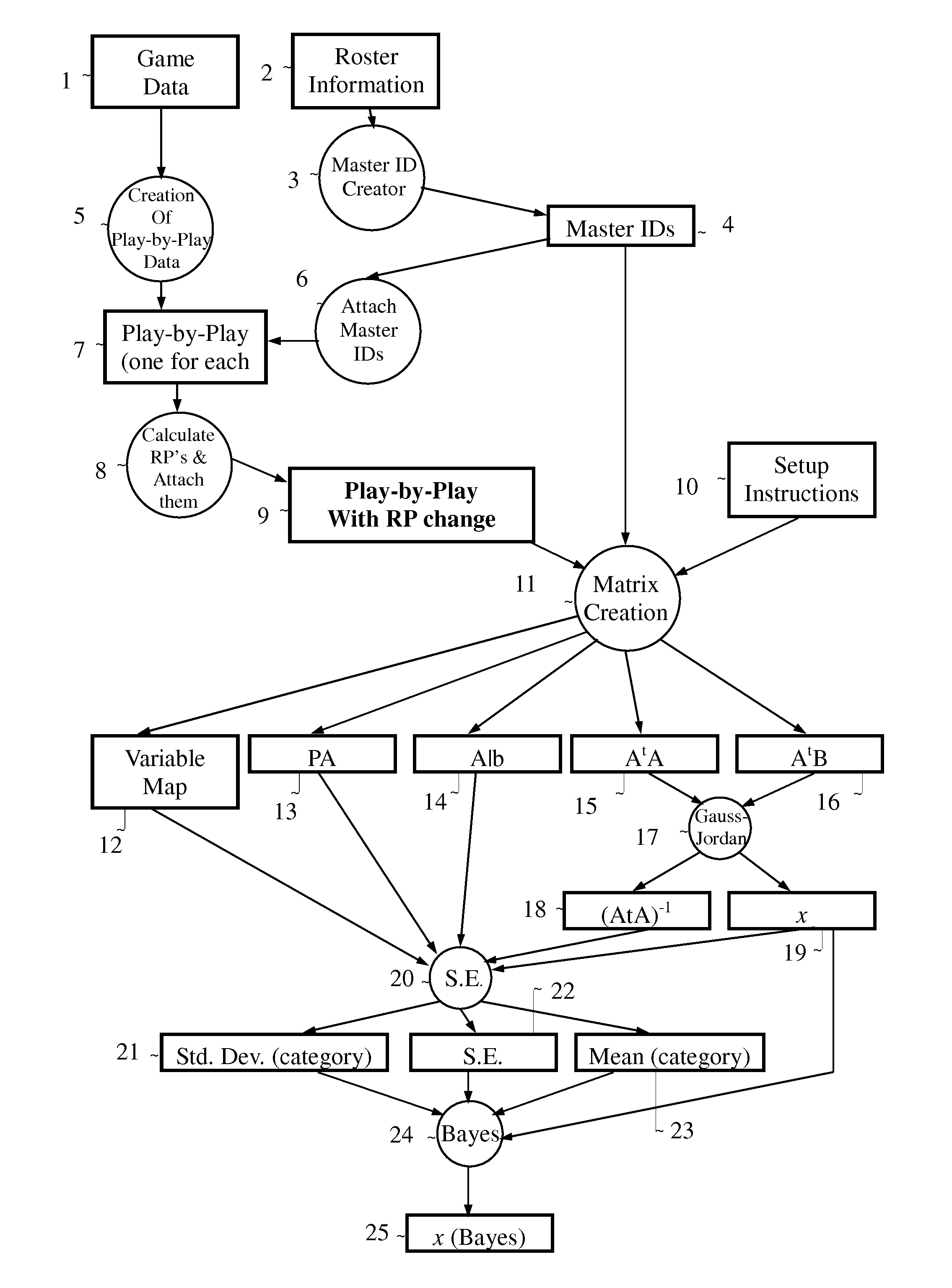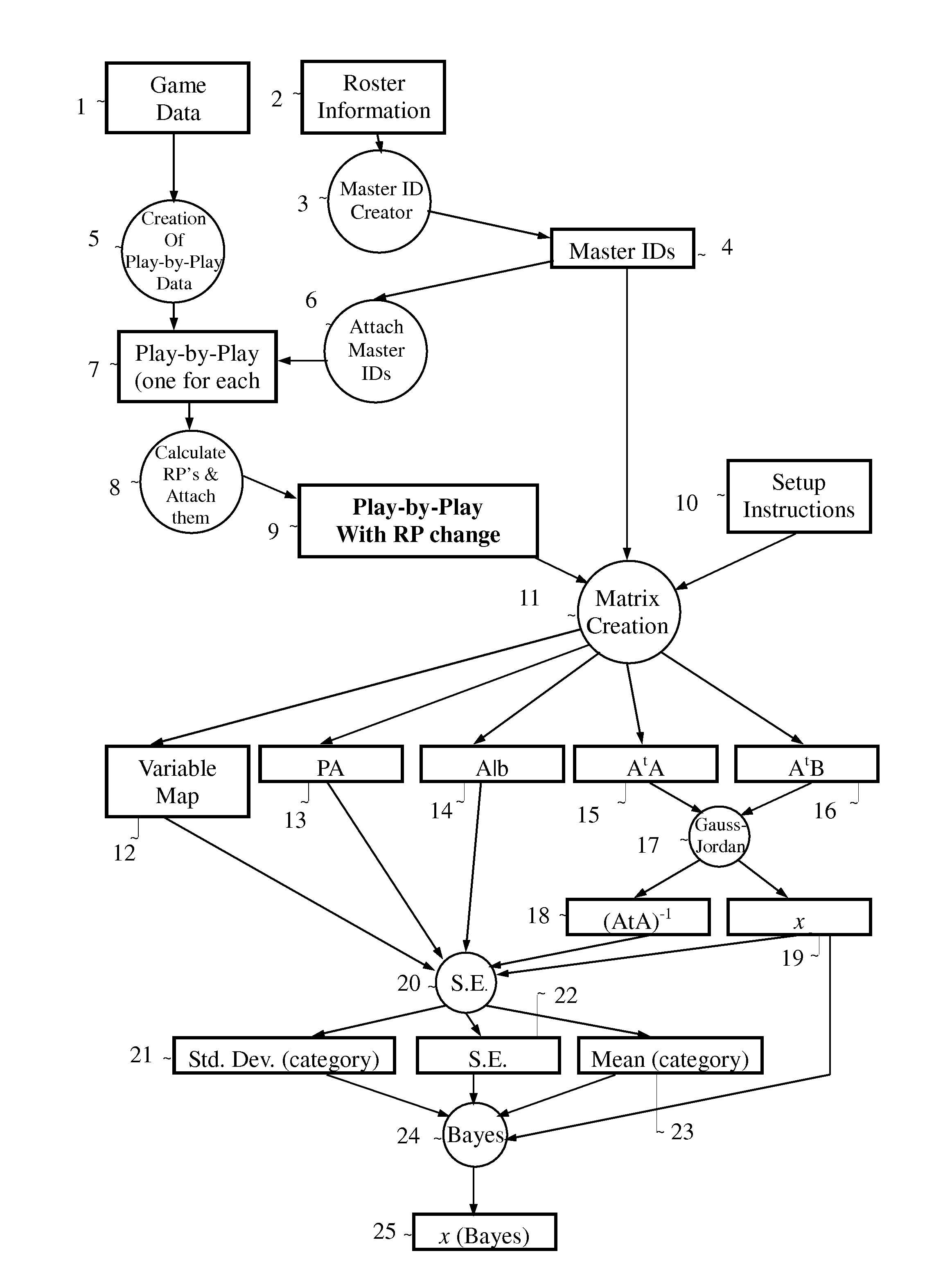Evaluating individual player contribution in a team sport
a team sport and individual player technology, applied in the field of individual player and factor evaluation in team sports, can solve the problems of more errors, less range, dubiously fit or completely unfit for the desired purpose,
- Summary
- Abstract
- Description
- Claims
- Application Information
AI Technical Summary
Benefits of technology
Problems solved by technology
Method used
Image
Examples
Embodiment Construction
[0016]Disclosed herein is a method for the evaluation of players and non-player factors in a team game. There are many embodiments of this invention, and herein are described the presently most preferred embodiments.
[0017]In a first preferred embodiment of the invention, the method may be used to approximate the relative contributions of all the players and all or most other known factors toward the outcome of a professional baseball game. A first step in the method is to identify a number of team game events that each have a quantifiable result that contributes to (or entirely or aggregately constitutes) the game result. In a preferred embodiment for baseball, a single plate appearance of a batter is the team game event, and the quantifiable result of the event is the difference in run potentials for the offensive team immediately after the plate appearance was concluded as compared with the run potential that existed immediately before the plate appearance began.
[0018]As noted in ...
PUM
 Login to View More
Login to View More Abstract
Description
Claims
Application Information
 Login to View More
Login to View More - R&D
- Intellectual Property
- Life Sciences
- Materials
- Tech Scout
- Unparalleled Data Quality
- Higher Quality Content
- 60% Fewer Hallucinations
Browse by: Latest US Patents, China's latest patents, Technical Efficacy Thesaurus, Application Domain, Technology Topic, Popular Technical Reports.
© 2025 PatSnap. All rights reserved.Legal|Privacy policy|Modern Slavery Act Transparency Statement|Sitemap|About US| Contact US: help@patsnap.com



